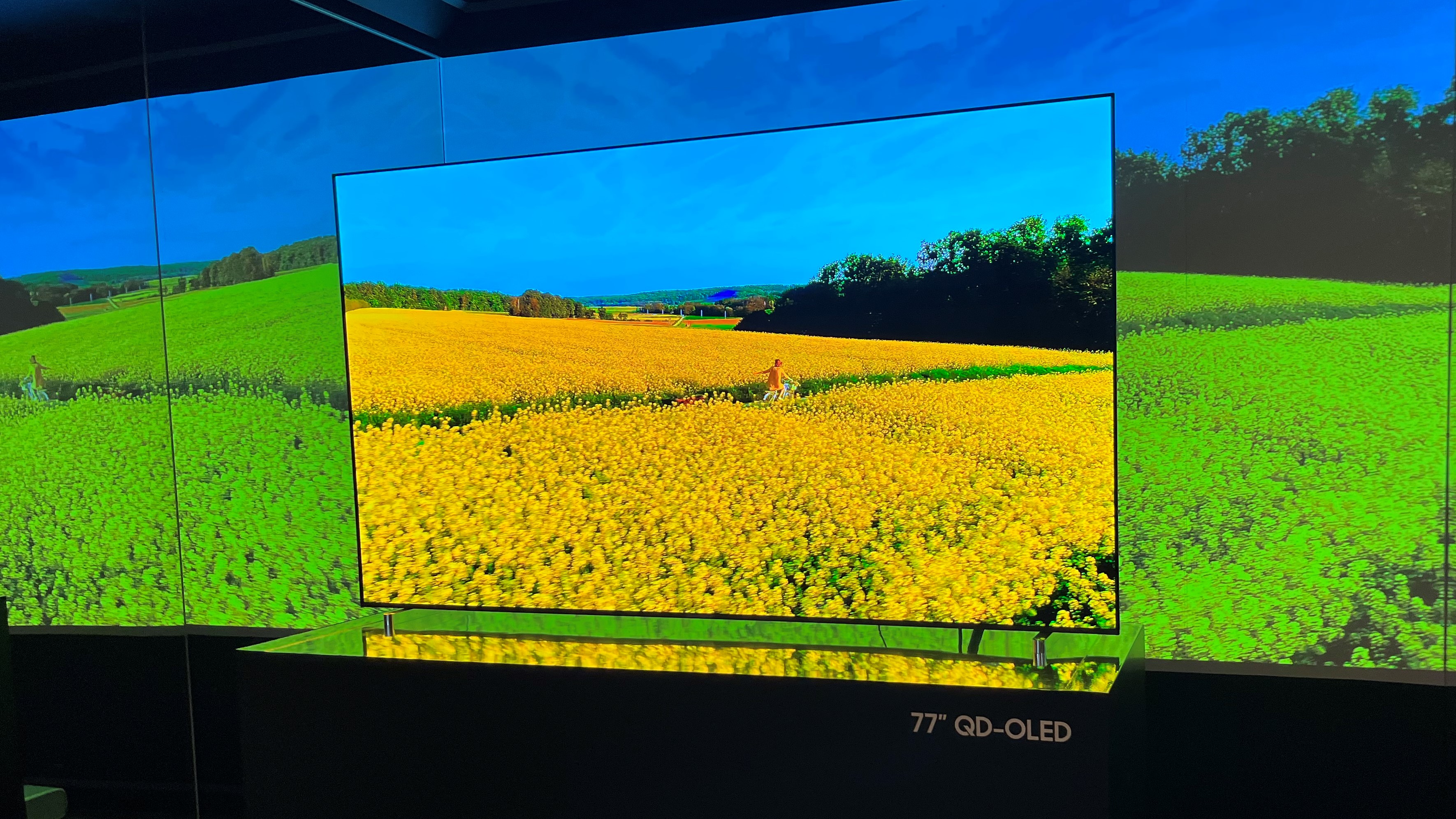Sorry regular OLED TVs, QD-OLED could become the new Hollywood standard
QD-OLED could be the tech of choice for film studios

QD-OLED technology has just been given a seal of approval that even the best OLED TV tech hasn't achieved: to become an industry standard display tech that Hollywood's top filmmakers use to see how their films will look in your home.
QD-OLED is a technology that takes normal OLED (organic light emitting diode) TV tech and makes it brighter without removing the deep, dark blacks that OLED delivers and traditional LED TVs can't. It does that by boosting the blue light from OLEDs via a layer of microscopic semiconductor crystals called quantum dots. Those diminutive dots make the light even more intense, filtering it to create brighter, more vivid colours than a normal OLED TV can provide.
QD-OLED TVs aren't quite as dark as regular OLEDs, but that's not something most people would notice. What you can't fail to notice, though, is how bright QD-OLED is. I've got a Samsung QLED TV, which also uses quantum dots, and it's so bright I should probably wear sunscreen when it's on.
What's that got to do with Hollywood? It's all to do with the post-production editing process when filmmakers and editors are mastering and grading a film or TV show.
When a Hollywood movie is edited, its colour and luminance are graded on very expensive high-end displays such as Sony's BVM-X300 RGB OLED. That tops out at 1,000 nits of brightness, and is one of the reasons why many HDR movies and shows are designed for displays that also max out at 1,000 nits. But a new pro-spec monitor already in use by Hollywood studios uses QD-OLED to go much brighter.
Why does QD-OLED matter?
Film studios have used other TVs to test their films and shows. For example, you might find an LG OLED, a Panasonic OLED or a Samsung OLED as a secondary display in some mastering suites. But those displays are consumer TVs, not reference-grade monitors, and that means using them is a bit of a lottery.
Enter Flanders Scientific, a trade specialist in broadcast monitors and color management devices. Its new XMP550 reference monitor is designed to deliver studio-spec accuracy – it's a qualified Dolby Vision mastering monitor – with much higher brightness of 2,000 nits and 2,000,000:1 contrast thanks to its Samsung Display QD-OLED panel. HDR is capable of supporting even higher levels of brightness – 10,000 nits in the case of Dolby Vision – but 2,000 is more than enough to be going on with for now, not least because nobody actually makes a 10,000 nit TV.
Sign up for breaking news, reviews, opinion, top tech deals, and more.
If studios embrace this display, and many are likely to, then that's inevitably going to affect how shows and movies are mastered for TVs. With 2,000 nit TVs such as Samsung's S95C becoming more popular, filmmakers and showrunners are going to want to take advantage of that power to make their creations even more vivid. You don't need to rush out and buy one just now, but it seems safe to say that for HDR on QD-OLED, the future's bright.

Contributor
Writer, broadcaster, musician and kitchen gadget obsessive Carrie Marshall has been writing about tech since 1998, contributing sage advice and odd opinions to all kinds of magazines and websites as well as writing more than twenty books. Her latest, a love letter to music titled Small Town Joy, is on sale now. She is the singer in spectacularly obscure Glaswegian rock band Unquiet Mind.